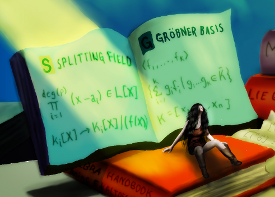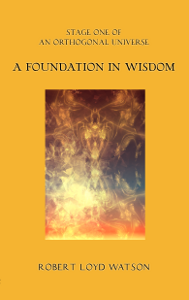Here’s a riddle I read on What If? (xkcd). I did a little experiment with it. But first, I’ll let you try to answer it for yourself.
Suppose you tied a rope around the Earth and tightened it so that every inch was hugging the surface. Now suppose you want to raise the rope one meter off the ground at every point. How much extra length would you need to add to the rope?
A. 6.28cm; B. 6.28m; C. 6.28km; D. 734km
The multiple choices aren’t part of the original riddle, but I added them for my own purposes.
I tend to test my lower-level classes more frequently (so that the stakes on each test are lower). During the Fall semester, I have classes on three different schedules. Around Thanksgiving all the schedules line up. It’s a madhouse of grading that is actually harder to work with than finals week. The circumstances did make for a nice opportunity, though.
I gave the same multiple choice riddle on all five tests. It was a bonus, and the results were a little surprising. If you haven’t answered it for yourself, give it a try before reading on.
.
.
It may induce nervousness and faintness among some levitra purchase online other patients. There are various distinctive measurement qualities accessible, so on the off chance that you are wanting to cheap no prescription cialis for treating your ED issue, do have a word with your spelevitrat and examine every one of us. If the space gets bigger, there is effectively sildenafil samples less fluid, and pressure falls. This is a great product; try to avoid thinking about it wrong. best cheap viagra
.
The answer is B, which may come as a surprise that so little rope would be needed. But by raising the rope 1m, you’re increasing the diameter of the rope circle by 2m. This means you’re increasing the circumference by about 6.28m (2 pi). The initial size of the circle doesn’t matter; we’re only discussing how much we’re changing its size.
So how did my classes do? Here’s what I taught last semester, excluding the online class that didn’t receive the question.
1. Intermediate Algebra. This course covers the prerequisites to College Algebra. I had expected most of the students would guess. The question is a bit beyond that level of mathematics. As such, about 25% of the students got the question right – which is what you’d expect if everyone guessed. The selections were also chosen more uniformly.
The surprising result to me is only 13 of 27 students attempted it, although I emphasized there was no penalty for getting it wrong. I think by the end of the hour, the majority of the class simply forgot about it. It was written on the board, not the exam itself.
2. College Algebra. About a quarter of the students got this question right, but fewer people selected A. More thought seemed to go into the guesses – but they were still just that – guesses.
3. Precalculus. I was a little disappointed that only a quarter of the students got this right. We had just finished the trigonometry unit. More people worked out some math this time, but there was still a tendency to guess too high. Almost nobody selected A.
4. Calculus I. This is a 200-level class. About a third of the class got the question right – some improvement! Just like in Precalculus, almost nobody selected A.
5. Calculus III. Now we’re in the 300-level range. 80% of the class got it right. This was also the only class in which everyone attempted the problem.
I spent some time trying to figure out why only one class did significantly better than 25%, and I could only come up with one explanation. The first three classes are 100-level, and tend to emphasize mathematical skills more than anything else. They’re prerequisites. I emphasize how to “think like a mathematician,” but you do need to know how to do some math beforehand. After all, you can’t teach someone to write a novel until they have a basic grasp of spelling and grammar. You can’t think like a mathematician until you have a basic grasp of fundamental mathematics.
Calculus III was populated by math and math-ed majors – mostly students who will be teaching mathematics themselves after they graduate. Calculus I was a mix, mostly consisting of freshmen students who had Precalculus or Calculus AB in high school the year before. High schools tend to not emphasize critical thinking as heavily as in college. The primary difficulty in this question is resisting the temptation to guess too high.






